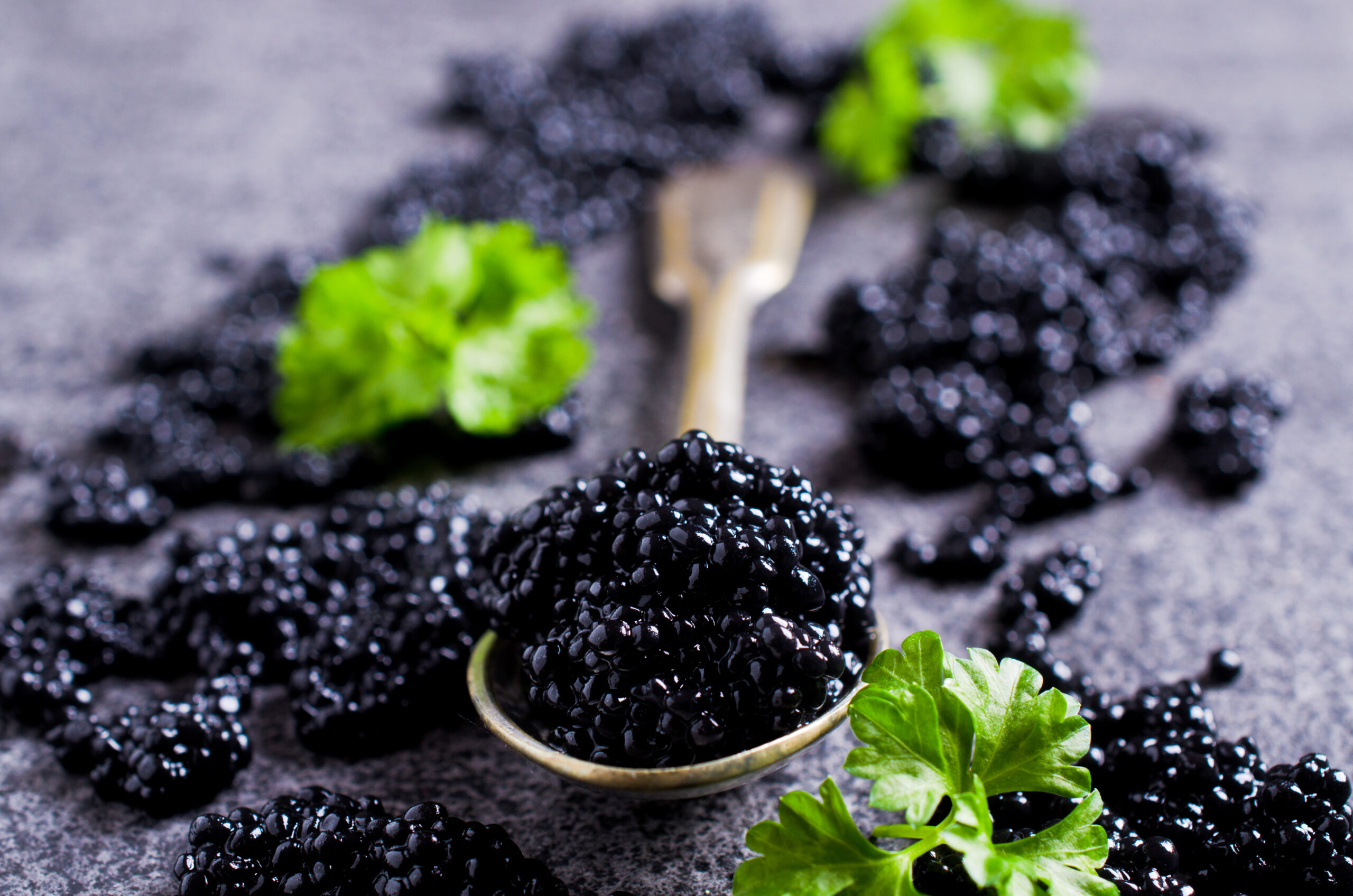Caviar: A Luxurious Gastronomic Delight
Caviar, often hailed as the epitome of gastronomic luxury, is a delicacy that has captivated the palates of epicureans for centuries. Originating from the unfathomable depths of the ocean, caviar’s mystique lies in its exclusivity, exquisite flavor, and historical significance. It stands as a testament to the marriage of culinary artistry and natural splendor, earning its place as a symbol of opulence and refinement.
Derived from the roe of sturgeon, caviar’s journey from the Caspian and Black Seas to the world’s most extravagant dining tables is an intriguing tale of cultural exchange and culinary evolution. Sturgeon, a prehistoric fish species, has been revered by various civilizations throughout history for both its flesh and its eggs. The word “caviar” itself stems from the Turkish word “khavyar,” which translates to “egg roe.”
Caviar’s distinction as a gourmet treat is deeply intertwined with its rarity. Sturgeon populations have dwindled over the years due to overfishing, pollution, and habitat loss, leading to a significant decrease in the availability of high-quality caviar. As a result, caviar has become a scarce and coveted ingredient, elevating its allure among aficionados and making it a status symbol synonymous with luxury.
The flavor profile of caviar is a symphony of subtle nuances that dance upon the taste buds. Upon the tongue, the caviar releases a burst of briny saltiness, reminiscent of the sea from which it originates. This initial sensation gives way to a delicate creaminess as the tiny eggs dissolve, leaving behind a lingering, nutty aftertaste. The texture is equally remarkable—firm yet yielding, with each bead encapsulating a pristine taste of the ocean.
Traditionally served on a bed of ice or mother-of-pearl, caviar consumption is an art in itself. Purists argue that the use of metal utensils is sacrilegious, as it can taint the caviar’s delicate flavors with a metallic tang. Instead, a simple mother-of-pearl spoon is preferred to ensure an unadulterated experience. Caviar is often accompanied by a selection of accompaniments known as “caviar accoutrements,” which include finely chopped red onion, sieved egg yolk, sour cream, crème fraîche, and small blini pancakes. These accoutrements serve to enhance the caviar’s richness while balancing its intense taste.
Throughout history, caviar has graced the tables of royalty, dignitaries, and celebrities. Its association with opulence can be traced back to the Persian Empire, where it was deemed fit for kings. In medieval Europe, caviar was considered a symbol of status and was reserved for the aristocracy. Russian tsars were particularly enamored with this delicacy, and it became a staple of their extravagant banquets. However, the industrial revolution and unchecked fishing led to a sharp decline in sturgeon populations, threatening the very existence of caviar. This scarcity, in turn, fueled its reputation as a luxury product.
As the demand for caviar grew, attempts to cultivate sturgeon and produce caviar through aquaculture gained momentum. Sustainable caviar farms emerged, aimed at preserving the sturgeon species while meeting the demand for this prized delicacy. These farms painstakingly replicate the natural habitat of sturgeon in controlled environments, enabling the fish to mature and produce roe. The result is a sustainable source of caviar that mitigates the ecological impact caused by wild harvesting.
In recent years, caviar’s allure has expanded beyond its traditional strongholds in Russia and Iran. Countries such as the United States, France, and Italy have successfully established themselves as producers of high-quality caviar, adding their own unique twists to the traditional delicacy. These endeavors have not only diversified the sources of caviar but also made it more accessible to a wider audience.
In conclusion, caviar stands as an exquisite example of humanity’s ability to transform nature’s bounty into a sublime culinary experience. Its rarity, flavor complexity, and historical significance have solidified its status as a luxurious gastronomic delight. From its origins in ancient civilizations to its modern-day cultivation on sustainable farms, caviar continues to captivate the senses and represent the pinnacle of indulgence. Whether enjoyed on its own or paired with the finest accompaniments, caviar remains a timeless symbol of opulence and refinement, a testament to the enduring allure of the culinary arts.

